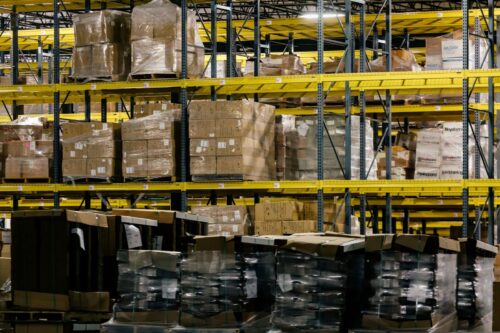Supply Chain Visibility: What It Is, Importance, and Types

Supply chain visibility is a process that provides customers with information regarding a product or service they ordered. By informing customers of the timeframe and details about a specific product they ordered from a business, the corporation can monitor orders, increase its daily operation efficiency, and avoid customer dissatisfaction.
Without supply chain visibility, individuals would not be able to see the movement of their product through every step of the fulfillment and delivery process. Furthermore, suppose companies cannot know the status of their final products. In that case, they will not be able to create accurate timelines, guarantee on-time delivery, make trusted decision-making, or avoid obstacles.
What Is Supply Chain Visibility?
In easy terms, supply chain visibility is the ability of products or services to be analyzed and tracked during their lifespan. After a manufacturer creates a product, supply chain visibility allows customers and the business itself to keep an eye on the status of the product until it reaches its final destination.
Full supply chain visibility is key to customer service, order fulfillment, business analytics, and improving business processes. Without this data, most companies would not know where to improve delivery services. Plus, customers would not be able to view the status of their shipment, which could increase customer dissatisfaction and reduce customer demand.
Why Is Supply Chain Visibility Important?
Supply chain visibility is one of the most important aspects of keeping customers happy. It provides customers with crucial information on when their product will reach the destination, which can help reduce confusion or misinformation. Without this transparency, customers would understand the delivery process of a product or see when an out-of-stock product will be back in circulation.
Furthermore, end-to-end visibility helps businesses understand the areas in which they may need to improve their delivery processes. Knowing when it may need to add additional resources can help a corporation determine how to best optimize its resources to boost the number of recurring customers and overall satisfaction levels.
Decision-makers within industry-leading businesses must understand the varying supply chain visibility types to increase the efficiency of their companies, make data-backed decisions, and analyze real-time insights.
Supply Chain Visibility Types

Different types of supply chain visibility are critical to all of the supply chain operations within a company.
Order Details
The ‘order details’ for supply chain visibility are the details of a particular product/group of products, including what was ordered, tracking details, shipment updates, and other vital data.
Order details provide the business with an idea of where products are, current inventory levels in the trucks and warehouses, and products that are due to arrive. Plus, transparency in the ordering process is key to giving customers an idea of when their shipment may arrive.
Any lack of transparency or current information could make customers dissatisfied with the specific company’s protocols. Supply chain leaders must explain the order details to avoid confusion between their employees and the consumers, which can reduce consumer demand.
Component Location
The component location is the physical location of a product ordered by a consumer. Knowing where something is can help a business streamline its delivery process and provide the customer with an estimated time of delivery.
Tracking every part of the physical product’s location can help businesses figure out how long it may take a customer to receive their order. Knowing the component’s location can provide a company with necessary self-help data if modern supply chains are hindered along the way.
Plus, the customer will be able to track individual components and know how long it will take and receive any updates/delays along the way.
Inventory
Inventory within supply chains refers to the availability of products. Inventory visibility is crucial for businesses to understand real-time data and interpret actionable insights that help them see the current stock at a warehouse or truck. This recent data provides businesses with the information required to better restock specific locations to meet customer demands.
For customers, understanding current inventory can help them see what is currently in stock and what must be restocked. Providing consumers with stocking information, like the timeline of when refilling may occur, can help avoid ordering unavailable products.
Costs
Costs within supply chains refer to rates and expenses related to transportation. Cost visibility is paramount for businesses to understand the total cost per shipment, cost per product, and logistics costs. Suppose cost visibility is not available for corporations. In that case, they may lack current data and an overall view of the business’ fees. A lack of data can lead to overspending and a misallocation of resources.
For customers, knowing the costs of the product and shipping is key to avoiding any unforeseen fees or taxes during the ordering process. If you are wondering why supply chain visibility is essential, knowing the current costs and expenses is the difference maker between customers leaving and loyal consumers.
Auditing Records
Auditing records are vital documents that provide detailed information on transactions, costs, freight movement, and other expenses. Understanding auditing records can give companies in any industry greater transparency and a more straightforward way to comply with current regulations.
How To Improve Supply Chain Visibility

There are easy ways for businesses to improve their entire supply chain visibility for better transparency within the company and for the customers.
Automation And Software
The automation of supply processes and management software helps boost supply chain visibility. Regulating fulfillment and delivery steps can prevent customers from ordering out-of-stock products. Companies can avoid human error within supply chains by utilizing automated visibility software and machine learning.
By using supply chain automation, machine learning, and regulated supply chain software, companies can reduce manual work from employees and improve the efficiency of the supply chain from start to finish. The main benefits of supply chain automation include:
- Redirect manual labor to thought-provoking tasks that may require creativity
- Delegate menial tasks to automated intelligence and machine learning
- Minimize human errors by avoiding duplicated orders, incorrect data, and inaccurate information about the customer or order
- Increased visibility by updating the supply chain with real-time data
Training And Expertise
Companies must hire highly-trained staff that can help prevent human error during the ordering process. Having detailed learning manuals in place and going through in-depth steps during onboarding new employees can help companies reduce the likelihood of mistakes. Furthermore, studying supply chains can help with supply chain planning within a specific business.
There are perks to studying supply chain tactics and management skills, such as:
- Understanding new supply chain technology (ex: RFID, digital twin information, single customer view, etc.)
- Better communication between staff and employees
- Noticing and identifying complications or problems in the chain
- Brainstorming supply chain visibility solutions to identify hold-ups within the supply chain
Transparent Data
Presenting organized and transparent data that is easy to understand, simple, and comprehensive can help businesses improve their supply chain visibility. Relevant data can help companies learn more about their ordering process, which will help reduce overspending, determine how to allocate resources, and prevent human error. Furthermore, transparent supply chain data increases the likelihood of higher customer satisfaction levels.
The main benefits of business users providing real-time data within a supply chain include:
- Improved compliance via understanding real-time supply chain information and updates
- Ability to trace materials from start to finish
- Builds trust between businesses and consumers to streamline business operations
Understand Your Supply Chain
Another way to improve real-time visibility is organizing and mapping your supply chain network. Understanding the location of your resources, the origin of your resources, and how these products interact with your business is key to making your supply chain transparent.
The main benefit of spending extra time understanding your supply chain is lower overhead costs. Understanding your supply means you will understand your inventory needs, which can reduce over-ordering and excess spending. Limited visibility through every step of the process can create end-to-end issues.
Be Honest With Your Customers
Supply chain visibility works due to open lines of communication between businesses and consumers. Being honest and current with your customers is essential to keeping your customer base happy. Suppose there are any issues with your supply chain. In that case, you must share this information as soon as possible to avoid miscommunication or lying by omission.
Have A Direct Line Of Communication With Your Suppliers
A reliable and direct line of communication with your suppliers is essential to receiving current product information. Creating better supplier relationships can help you learn about your products, supplier information, shipments, and any possible delays to maintain control.
The full benefits of having an open line of communication during your supply chain management and with your product suppliers include:
- Higher levels of trust due to honest communication between suppliers’ systems (ex: legacy systems, disparate systems, etc.)
- Helps reduce risk in the future by resolving issues that may come up in the entire organization’s supply chain (ex: no raw materials, damage, lost inventory, etc.)
- Supports the business’ goals through long-term trust (leads to higher profit margins)
Benefits and Drawbacks of Supply Chain Management
| Benefits | Drawbacks |
|---|---|
| Reduces overhead costs | Expensive |
| Increases efficiency | Complicated |
| Lessens delays | Needs training/educational courses |
| Identifies areas that need work | |
| Better cohesiveness |
Final Thoughts
Full visibility is crucial to the business and customer experience when ordering a product.
Supply chain visibility has individual components that all make a huge difference in transparency and understanding the status of an order.
Companies must analyze their order details, physical component location, inventory, costs, and other common data to make better business decisions moving forward. Furthermore, customers can use this transparent information to receive current updates on the status of their package.
Businesses that enhance their supply chain visibility are more likely to establish a better relationship with their suppliers and customer base.
